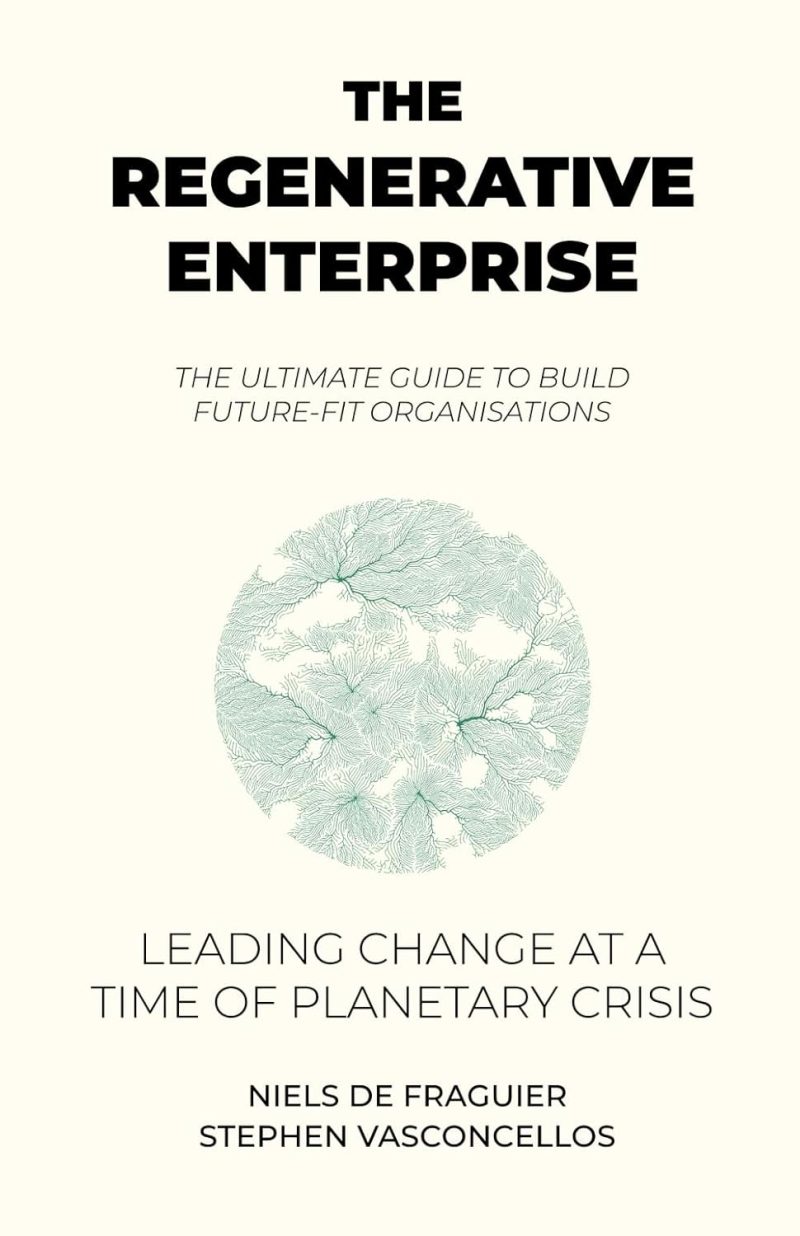Book Review: The Regenerative Enterprise – The Ultimate Guide to Building Future-Fit Organisations

Book Review by Ruah Swennerfelt
The Regenerative Enterprise: The Ultimate Guide to Building Future-Fit Organisations By Niels De Fraguier and Stephen Vasconcellos. 426 pages. Self published, 2023. Paperback $23.74. ebook $9.99
In a world in which change is both ever-present and accelerating, the qualities of innovation and adaptability are critical to health. It is this idea that Charles Darwin intended to convey in this often-misconstrued statement attributed to him: “In the struggle for survival, the fittest win out at the expense of their rivals.” What Darwin actually meant is that the most “fit” is the one that fits best, i.e., the one that is most adaptable to a changing environment.
– John Fullerton
This is a fascinating book that draws on permaculture, and because of that, nature serves as an example for designing organizations and businesses. The book is divided into three sections: Embarking on a Regenerative Journey; Embracing a Systemic Mindset; and Putting Regenerative Thinking into Practice. In the conclusion, the reader is provided actionable steps to take and stories of change.
The authors explore how economists, systems thinkers, and pioneering changemakers are catalyzing a new economy that works in harmony with nature. They pave the way for businesses and organizations to move from a sustainable to a regenerative mindset, supporting life on our planet.
The examples of life on the planet from the beginning and indigenous values are explored. I appreciated the redundancy of looking at nature first when sharing an idea for change. The pathways to this new paradigm of regenerative businesses are: Do less harm, mitigating risk; Do no harm, incremental changes; Do more good, net positive; and Do more good, life-affirming.
I consider myself well read and well informed, and I earned a certificate in Permaculture Design. But page after page brought about “aha’s” because of the way the authors wove ecology and organizational structures was exquisite.

